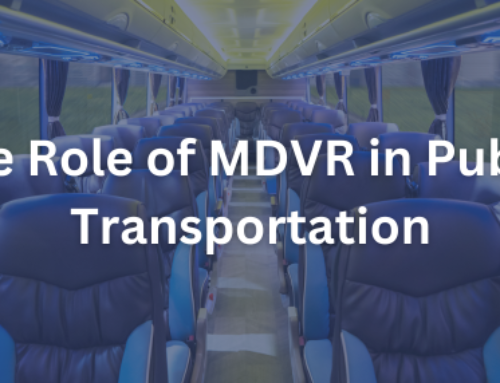Metal container GPS trackers are transforming the way supply chain monitoring is conducted. Gone are the days of relying on paper records and manual checks to ensure the safety and security of cargo. With advanced technology and real-time tracking capabilities, these trackers offer unprecedented visibility and control over the entire logistics process.
By incorporating GPS technology into metal containers, companies can effectively track the location, temperature, humidity, and even detect any possible tampering of goods. This invaluable data allows for proactive monitoring, resulting in improved efficiency, reduced risks of theft or damage, and better overall customer service.
The benefits of metal container GPS trackers extend beyond just tracking cargo. They provide essential insights into transit times and routes, enabling companies to optimize logistics operations and make informed decisions to streamline their supply chain.
As companies strive to meet the increasing demands of a competitive global marketplace, metal container GPS trackers offer a game-changing solution. With enhanced visibility and control, businesses can achieve greater efficiency, cost savings, and ultimately, deliver a superior customer experience.
The importance of supply chain monitoring
Effective supply chain monitoring is the backbone of any successful business operation in today’s globalized and competitive marketplace. As companies expand their reach and distribute their products across vast geographical regions, the need for real-time visibility and control over the entire logistics process has become paramount.
Without a robust supply chain monitoring system, businesses risk facing a myriad of challenges, from delayed shipments and inventory mismanagement to product theft and damage. These issues can have a significant impact on a company’s bottom line, customer satisfaction, and overall brand reputation.
Proactive supply chain monitoring enables organizations to identify and address potential problems before they escalate, allowing for swift decision-making and effective risk mitigation. By closely tracking the movement of goods, monitoring environmental conditions, and detecting any anomalies, companies can ensure the timely delivery of their products while maintaining the highest standards of quality and safety.
Challenges in traditional supply chain monitoring methods
Historically, supply chain monitoring has relied on manual processes and paper-based recordkeeping, which are inherently prone to human error and lack the real-time visibility required in today’s fast-paced business environment. Tracking the location and status of cargo using physical documentation and periodic check-ins can be time-consuming, labor-intensive, and often fails to provide the level of detail needed to make informed decisions.
Furthermore, traditional monitoring methods offer limited insights into critical factors such as temperature, humidity, and potential tampering, leaving companies vulnerable to the risks of product spoilage, damage, and theft. This lack of comprehensive data can lead to significant financial losses and damage to a company’s reputation, as customers demand higher levels of transparency and accountability.
As the complexity of global supply chains continues to grow, the limitations of traditional monitoring approaches have become increasingly apparent. Companies are recognizing the need for a more sophisticated and technologically advanced solution that can provide real-time visibility, enhanced security, and actionable insights to optimize their logistics operations.
How metal container GPS trackers work
Metal container GPS trackers are a revolutionary technology that addresses the shortcomings of traditional supply chain monitoring methods. These devices leverage the power of Global Positioning System (GPS) technology to provide precise, real-time tracking of cargo as it moves through the supply chain.
At the heart of a metal container GPS tracker is a robust, weatherproof casing that is designed to withstand the harsh conditions often encountered during transportation. This durable enclosure houses a range of advanced sensors and communication modules, enabling the device to collect and transmit a wealth of data about the cargo’s location, environmental conditions, and any potential security breaches.
The GPS module within the tracker continuously monitors the container’s position, providing detailed information about its route, speed, and estimated time of arrival. This data is then transmitted in real-time to a centralized monitoring platform, allowing logistics managers to track the progress of their shipments and make informed decisions to address any issues that may arise.
In addition to GPS tracking, metal container GPS trackers are equipped with sensors that can monitor critical factors such as temperature, humidity, and shock or vibration. These environmental sensors can detect any deviations from the pre-defined thresholds, triggering immediate alerts to the logistics team. This enables swift intervention to prevent product spoilage or damage, ensuring the integrity of the cargo throughout the entire journey.
The trackers also incorporate security features, such as tamper-evident seals and motion sensors, to detect any unauthorized access or tampering attempts. These security measures provide an additional layer of protection, deterring potential theft and ensuring the safety of the cargo.
Benefits of using metal container GPS trackers
The implementation of metal container GPS trackers in supply chain operations delivers a multitude of benefits that can significantly improve efficiency, reduce costs, and enhance customer satisfaction.
Enhanced Visibility and Control: The real-time tracking capabilities of these devices provide unprecedented visibility into the location and status of cargo, empowering logistics managers to make informed decisions and respond swiftly to any disruptions. This enhanced visibility enables companies to proactively address potential issues, reducing the risk of delays, product damage, or theft.
Improved Efficiency and Optimization: By analyzing the data collected by metal container GPS trackers, companies can identify opportunities to optimize their logistics operations. This includes optimizing transportation routes, improving load planning, and streamlining inventory management. These insights can lead to significant cost savings, reduced fuel consumption, and increased operational efficiency.
Increased Security and Reduced Risks: The security features of metal container GPS trackers, such as tamper-evident seals and motion sensors, help to deter theft and unauthorized access. This enhanced security, coupled with the ability to monitor environmental conditions, can help to prevent product damage or spoilage, ultimately reducing the risk of financial losses and brand reputation damage.
Enhanced Customer Experience: The real-time visibility and improved reliability of supply chain operations enabled by metal container GPS trackers can lead to better customer service and increased customer satisfaction. Customers can receive accurate delivery updates, and companies can provide more transparent information about the status of their shipments, instilling confidence and trust in the brand.
Regulatory Compliance and Sustainability: In many industries, regulatory bodies are implementing stricter requirements for supply chain transparency and environmental monitoring. Metal container GPS trackers can help companies comply with these regulations by providing detailed records of cargo movement, environmental conditions, and any potential security breaches. Additionally, the ability to optimize logistics operations can contribute to improved sustainability by reducing fuel consumption and emissions.
Best practices for implementing metal container GPS trackers
Successful implementation of metal container GPS trackers requires a thoughtful and strategic approach. Here are some best practices to consider:
Conduct a thorough assessment: Before deploying the trackers, it is essential to conduct a comprehensive assessment of your supply chain operations, identifying the key pain points, risks, and areas for improvement. This analysis will help you determine the most appropriate GPS tracking solution and ensure that it aligns with your specific business needs.
Integrate with existing systems: Seamless integration of the metal container GPS trackers with your existing enterprise resource planning (ERP), transportation management system (TMS), and other relevant software is crucial for optimal data integration and decision-making. This integration ensures that the tracking data is accessible and can be easily analyzed alongside other critical supply chain information.
Establish clear communication and training: Effective implementation of metal container GPS trackers requires clear communication and training for all stakeholders, including logistics teams, suppliers, and customers. Ensure that everyone understands the capabilities of the trackers, how to interpret the data, and how to respond to alerts or anomalies. This will help to foster a culture of collaboration and transparency throughout the supply chain.
Continuously monitor and optimize: Ongoing monitoring and optimization of the metal container GPS tracking system are essential to maximize its benefits. Regularly review the data, identify trends, and make adjustments to transportation routes, loading patterns, and other logistics processes to drive continuous improvement and optimization.
Collaborate with supply chain partners: Successful implementation of metal container GPS trackers often requires collaboration with various supply chain partners, such as carriers, suppliers, and customers. By fostering open communication and data-sharing, companies can enhance visibility, identify areas for joint optimization, and collectively address any challenges that may arise.
Cost considerations and ROI of GPS trackers
The investment in metal container GPS trackers can be significant, but the potential return on investment (ROI) can be substantial. When evaluating the cost of implementing these tracking solutions, companies should consider both the direct and indirect costs associated with the deployment.
Direct Costs: The direct costs of metal container GPS trackers include the hardware (the devices themselves), software, and associated subscription or licensing fees. Additionally, there may be costs related to installation, maintenance, and any necessary infrastructure upgrades to support the tracking system.
Indirect Costs: Indirect costs can include the time and resources required for training, integration with existing systems, and ongoing data analysis and optimization. These indirect costs may be more challenging to quantify but are essential to consider for a comprehensive understanding of the total cost of ownership.
To determine the potential ROI of metal container GPS trackers, companies should carefully analyze the benefits they can expect to achieve, such as:
Reduced Losses: By preventing product theft, damage, and spoilage, companies can realize significant cost savings and protect their bottom line. The ability to quickly identify and address any issues can lead to substantial reductions in losses, which can often justify the initial investment.
Improved Efficiency and Optimization: The insights gained from metal container GPS trackers can enable companies to optimize their logistics operations, leading to cost savings through reduced transportation expenses, improved inventory management, and increased productivity. These efficiency gains can contribute to a favorable ROI.
Enhanced Customer Satisfaction: Improved visibility, reliability, and customer service resulting from the use of metal container GPS trackers can lead to increased customer loyalty, repeat business, and positive word-of-mouth. These intangible benefits can be challenging to quantify but can have a significant impact on a company’s long-term success and profitability.
When calculating the ROI of metal container GPS trackers, it is essential to consider both the short-term and long-term benefits. While the initial investment may be significant, the potential cost savings, risk reduction, and improved customer experience can deliver a compelling and sustainable return on investment over time.
Conclusion: The future of supply chain monitoring with GPS trackers
The adoption of metal container GPS trackers is transforming the landscape of supply chain monitoring, ushering in a new era of unprecedented visibility, control, and optimization. As companies strive to navigate the complexities of global logistics and meet the ever-evolving demands of their customers, these cutting-edge tracking solutions have become an indispensable tool.
By providing real-time data on the location, environmental conditions, and security of cargo, metal container GPS trackers empower logistics managers to make informed decisions, mitigate risks, and enhance the overall efficiency of their supply chain operations. The benefits of this technology extend beyond just improved tracking, as it enables companies to optimize transportation routes, streamline inventory management, and enhance customer service.
As the global supply chain landscape continues to evolve, the importance of metal container GPS trackers will only continue to grow. These devices will play a crucial role in helping companies navigate the challenges of the future, from navigating disruptions and meeting sustainability goals to ensuring regulatory compliance and delivering exceptional customer experiences.
The future of supply chain monitoring is undoubtedly tied to the advancement of GPS tracking technology. As companies embrace this transformative solution, they will not only reap the immediate benefits but also position themselves for long-term success in an increasingly competitive and dynamic global marketplace.



